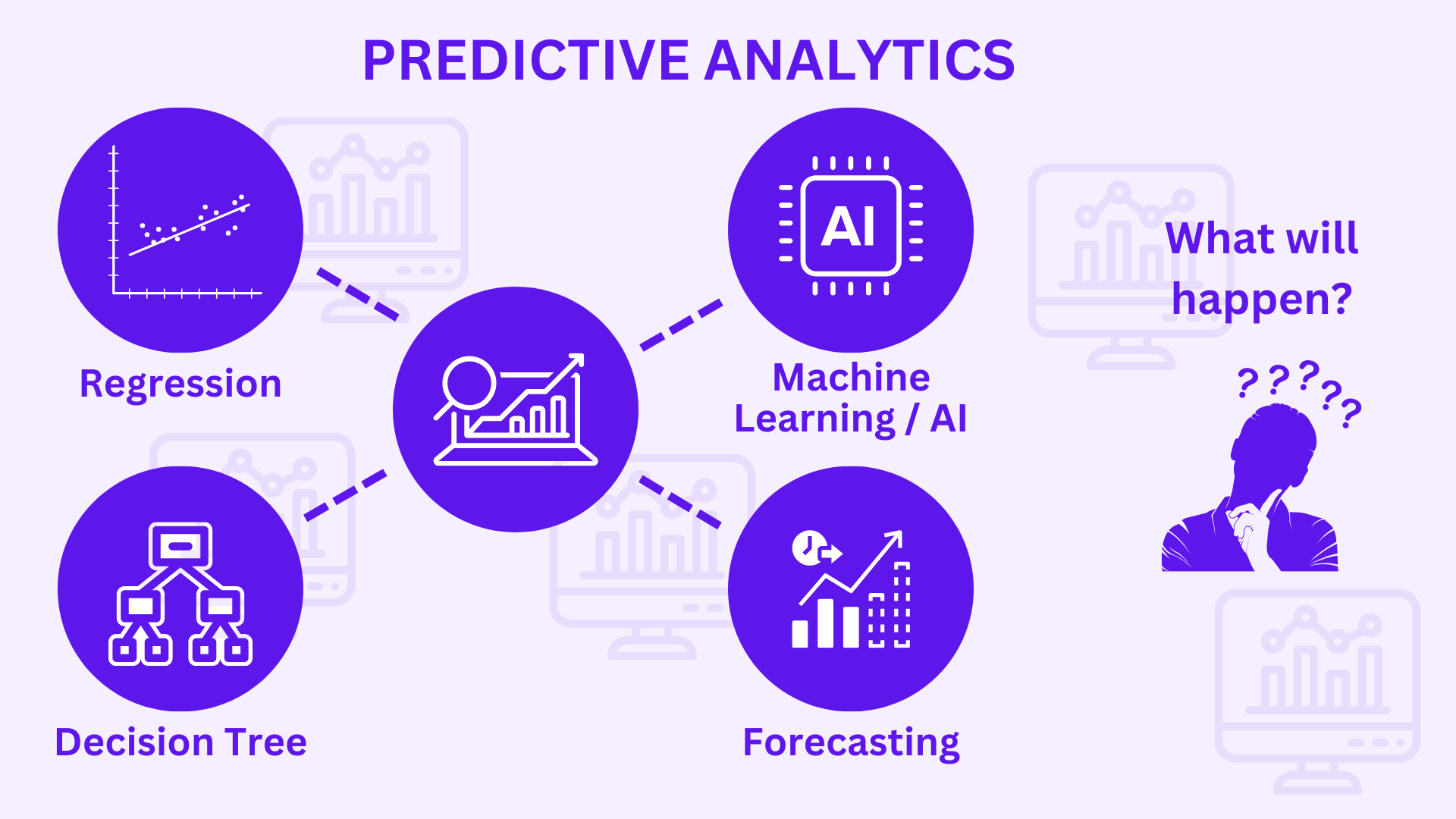Predictive Analytics

Predictive analytics is a sort of data analytics that identifies patterns in data and predicts future outcomes using statistical, machine learning, and artificial intelligence (AI) approaches. It is a strong tool for making better judgements in a variety of business applications.
Types of Predictive Analytical Models:
Predictive analytics models are designed to assess historical data, discover patterns, observe trends, and use that information to predict future trends. Popular predictive analytics models include classification, clustering, and time series models.
Classification models – Classification models fall under the branch of supervised machine learning models. These models categorize data based on historical data, describing relationships within a given dataset. It can also be used to answer binary questions, such as yes or no or true or false; prominent applications include fraud detection and credit risk assessment. Logistic regression, decision trees, random forest, neural networks, and Nave Bayes are examples of categorization models.
Clustering model – Clustering Model is an example of unsupervised learning. They categorize data based on similarities. An e-commerce site, for example, can use the model to divide clients into similar groups based on shared characteristics and build marketing strategies for each group. Clustering algorithms that are commonly used include k-means clustering, mean-shift clustering and hierarchical clustering.
Time Series Model – Time series models incorporate a variety of data inputs at different time intervals, such as daily, weekly, monthly, and so on. The dependent variable is commonly plotted across time to examine the data for seasonality, trends and cyclical behavior, which may indicate the necessity for specific transformations and model types. Time series models that are commonly employed include autoregressive (AR), moving average (MA), Autoregressive Moving Average (ARMA) and Auto-Regressive Integrated Moving Average (ARIMA). A call centre, for example, can use a time series model to anticipate how many calls it will receive per hour at various times of day.
Benefits of Predictive Analytical Models:
Security: Data security is an issue that must be addressed by every modern organization. Security is improved by combining automation and predictive analytics. Specific security procedures can be triggered by specific patterns associated with suspicious and anomalous end user behaviour.
Risk reduction: Most firms are attempting to minimize their risk profiles in addition to keeping data secure. For example, a credit provider can utilize data analytics to determine whether a customer is at a higher-than-average risk of default. Other businesses may use predictive analytics to determine whether their insurance coverage is appropriate.
Better decision making: Running a business necessitates making calculated decisions. Any expansion or addition to a product line, or any other type of growth, necessitates weighing the inherent risk against the potential outcome. Predictive analytics can provide knowledge to help inform decision-making and create a competitive advantage.
